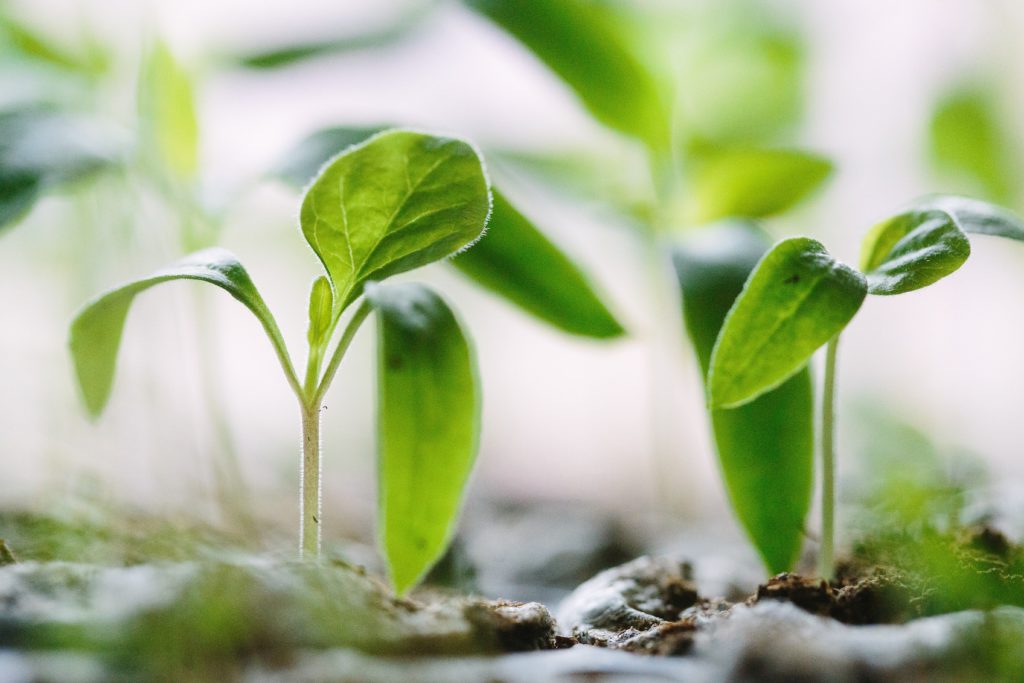Habits don’t really get talked about enough. The daily routine we employ is, after all, how we spend our time. How can we be sure we are making the most of it? Today’s post will outline the basic ideas of James Clear’s landmark text on how and why we form habits, Atomic Habits. I read this book last year, and took copious notes, but didn’t realize just how well he explains each concept until I began thinking about modifying my own habits a few months later. The difference between this book and other self-improvement texts is Clear dives into how habits are formed which enables you personally to then determine the habits you want to keep, eliminate, or develop. I found his thoughts and method effective and simple to follow. I’ve used these principles to build up my habit of reading every night before bed as well as to create a daily stretching routine, beginning last August, and haven’t missed a day yet. My goal for today is for you understand how habits are formed, and taking that knowledge, you can then form or remove the habits in your own life which don’t line up with your long-term goals.
How and why we form habits
A habit is a behavior repeated until it has become almost involuntary or automatic. Habits are formed in predictable ways, making creating good habits, or changing bad ones, nothing more than a simple formula.
Building habits is something we often do without realizing it. Our brains rely on habits and automatic responses to lighten the workload of thinking, maintaining our bodies’ systems, and making decisions. Our brains use a whopping twenty percent* of our total energy, even while we’re asleep! This means that whenever possible, our brains use patterns to reduce the energy output required by thinking and decision-making. When this pattern is repeated to the point it is nearly automatic, we call this a habit.
These habits make up our morning routines, shape our diets, and ultimately direct our lives. If our habits are poor, most likely, our trajectory will likely be disappointing. However, the good news is, because habits form through a predictable series of cues and reactions, we can train healthy habits and eliminate unhelpful ones. Understanding this pattern takes the mystery out of why we find some habits difficult to break and others nearly impossible to keep. By understanding how our minds develop habits, we can work with them to realize the healthy, productive goals we have for ourselves.

The habit loop
The reason many of us fail when trying to build good habits, or break bad ones, is that we don’t understand the habit loop. This sets us up to fail in our endeavors, no matter how great or small they may be. As Clear writes, “Every goal is destined to fail if it goes against the grain of human nature.” This habit loop consists of four components, each following the previous in a reliable order. This order acts as a formula; simply plug in the actions to the appropriate space, and you’ve created a custom habit loop.
A. Que
The cue is what triggers the habit. This could be an action or a time of day. For example, the alarm going off in the morning could trigger getting out of bed and putting on your running clothes and shoes. Or, finishing dinner in the evening could trigger turning on the television. This is the predictor of the habitual behavior.
B. Craving
Next comes the craving, or desire, for the expected reward. This is the anticipation of what the habitual action will bring. Putting on running shoes triggers anticipation of endorphins, fresh air, the enjoyment of moving, and so on. Finishing dinner cues the craving of relaxing and reducing your stress levels.
C. Response
The response is the action or habit itself. This would be setting out for the run or the actual motion of turning on the television. This specific reaction brings about the craved-for reward.
D. Reward
Finally, we arrive at the satisfaction of the craving. If you’re running, you feel satisfied that you are out, following through on your plans, and enjoying the act of running. In the case of the television, you feel relaxed and entertained.
The most commonly cited example of this in psychology is the experiment involving physiologist Ivan Pavlov’s dogs. In the study, every time the dogs received their meal, researchers rang a bell. Over time, the ringing of the bell would produce anticipation and salivating in the dogs; they had associated the sound of the bell with the reward of food. The cue of the bell producing the craving and anticipation of food. The habit itself was understanding it was time to eat. The dogs then received the reward of food. Our humans brains work in the same manner.
Why habits enable freedom, not limit it
As touched on above, our brains form habits in an effort to reduce their workload; they actually make room for decision-making. If we embrace allowing certain actions to become automatic, we save ourselves the energy and focus for more important decisions. For example, by allowing the habit of brushing our teeth to become a habit every morning and evening, we make sure a healthy action is completed and also eliminate the extra time and effort it would take to decide when to brush our teeth. We associate it with waking up and going to bed, saving time and energy. Imagine looking at your schedule each day to decide when to make these small decisions! You wouldn’t have time or energy for the really important decisions you need to make. Similarly, we can build larger habits into our daily routines that serve us; things like exercising daily, reading every evening, journaling, spending time with loved ones, or anything else we want to make sure we do regularly. By building these things into a framework, we first, ensure they actually happen and second, spend less time and energy thinking about them, and more energy on them. Scheduling or automating your most important hobbies or activities doesn’t diminish their importance; it reflects that importance. We schedule what is important to us, therefore, if spending an hour of undivided attention with your spouse is important and the goal, scheduling it greatly increases the chances it will happen.

People sometimes push back against the notion of forming habits, saying they feel restrictive. The process of eliminating or forming new habits certainly can feel restrictive or cause stress if we focus on the action itself, rather than the bigger picture. This is true; habits can remove certain types of decisions from your attention. People are concerned that if they build automatic routines into their lives, they won’t be free to embrace spontaneity. The energy and ability to be spontaneous comes from habit. If we feel out of control over when or if the most important things get done, we tend to shrink back from opportunities. Once we’ve planned out the priorities for the day, we are free to move on to other decisions and actions. Having a routine and system of habits built allows for energy and time to spend on other things.
Shorter is better
The key to making a habit automatic is keeping the response itself short. We are focused here on small successes – taking the smallest step you can to consider that day successful.
This flies in the face of conventional wisdom which says to set huge goals from the outset and somehow build up the momentum and motivation to tackle them. In setting huge goals while also trying to build the habit itself, we set ourselves up for failure.
The solution, now that we understand how and why we form habits, is to start with a small and easy habitual action. Only once you’ve build the habit of taking the time daily do you begin to build that time up.
Clear’s advice is the two-minute rule, which is keeping the new action or habit itself to less than two minutes. The idea is to take something small and reduce it even more, resulting in an action you can accomplish without even trying. Some examples are developing the habit of jogging each day by committing to ten minutes. Reduce that time to two minutes. “Anyone can jog for two minutes.” This is the point; you can accomplish it each day automatically. As you build the habit, you add time to it, eventually running miles regularly without having to suddenly rearrange your schedule or find the motivation to start. It becomes a repeated pattern of behavior.
Another example is wanting to become someone who reads every day; commit to two lines. Make it ridiculously easy to begin with and keep doing. Everyday that you read two lines, mark your success on the calendar. Don’t break the chain. If you miss a day, “never miss twice.” The most important part is building the habit of doing the action daily. We are looking for continuation, not duration here. Once that becomes automatic, add time or reps, etc., to the habit.
This is the rule I used to start the habit of stretching every morning when I first wake up and every evening before bed. I committed to stretching for just two minutes as soon as I got out of bed and two minutes before I got into bed. Over time, the bed itself has become the trigger. It is such an ingrained habit that I’ve added several minutes to the routine and continue to go through that routine even while traveling. I know that at the very least, every day I will complete at least ten minutes of stretching, each time proving to myself that I am a person who moves everyday. What do your current habits say about who you are and what kind of habits do you want to create the future you?

Decision fatigue
Each day, we make hundreds of decisions about what to eat or watch, which task to focus on, whether to click that link, responding to an email, methods to use and routes to take. By the end of the day we’ve used up our willpower and ability to make quality decisions. It’s why we have trouble some nights turning off Netflix and taking ourselves to bed.
We’re tired of thinking and making decisions. We’ve exhausted our attention and motivation. Psychologists call this decision fatigue.
This phenomenon is why some of those who routinely make critical decisions reduce the number of choices they face throughout the day. Steve Jobs famously wore black turtlenecks exclusively, eliminating a decision about what to wear each morning. Similarly, President Obama only owned blue and gray suits during his political career, with the same target. We can mirror this in our own daily lives by eliminating low-impact decisions, as well, by building a system of automatic habits. In doing so, we eliminate routine choices and free up more of that critical energy our brains need to function at high levels. This could be as simple as eating the same breakfast every morning, or building a jogging habit into your morning routine. So long as it removes the guesswork from your routine, it is accomplishing that goal of keeping decision-making resources for more important matters. Other examples include setting out your clothes or lunch the night before, following the GPS instead of choosing between different routes, only responding to emails at designated times, setting one time to wake-up and go to bed. Eliminating choices by making habits automatic is how we reserve that energy for higher-value decisions when it counts, working with and not against our brains’ tendencies to keep tasks and decisions quick and automatic.

Instead of relying on choice, like inspiration or willpower, we can create systems which automatically move us closer to our goals and eliminate the need for a decision. By setting up a chain of habits, one action dictates the next and the next, and so on. For example, you could set a bedtime routine like the following to ensure you get to bed on time each night: after showering for the evening, make a cup of tea, then read a book for a half hour, then go to bed. One action acts as a cue for the next action, creating a chain or system of habits.
The impact of small daily gains
Our choices end up producing the quality and direction of our lives. As Bill Gates has said,
“We always overestimate the change that will occur in the next two years and underestimate the change that will occur in the next ten. Don’t let yourself be lulled into inaction.”
The same concept applies to our habits. We overestimate our ability in the short-term, and underestimate the massive change we can affect in the long-term. When we perform the same actions day by day, we eventually build a life based around those habits. The question then becomes, what daily habits should I form to build the life I want to live?
One of my favorite examples of this, referenced both in Clear’s book and other articles, is Hall of Fame NBA coach Pat Riley’s philosophy of improvement. He aims for each player on his roster to have a career-best season, every season. Sounds intimidating, doesn’t it? His system, though, is actually quite remarkable. It’s simply to become one percent better each season. As Clear points out, “if you can get one percent better each day for one year, you’ll end up thirty-seven times better by the time you’re done.” A one percent increase in rebounds or foul shots every season, then, does become a career best performance each year. This demonstrates the long-term power of small changes, as opposed to huge, dramatic shake-ups. By getting the basic habits built into an automatic system, then tracking or measuring them, we can set the stage for our own steady, incremental improvement from year to year, not just week to week. Slow, deliberate changes are how we create lasting change in our lives.
“We don’t rise to the level of our goals, we fall to the level of our systems.”
James Clear
Why motivation doesn’t work
Motivation is found in the doing. We gain motivation when we take action, nut before the action. By this reasoning, you need to actually go out for a run before you feel like running, or begin reading the book before you’ll feel like reading. This is why tips like spending three minutes focused on whatever task you need to do usually works; because once we start something, that action often motivates us to see that task through. This applies to nearly all actions we take. It applies to everything from getting to the gym, to during the actual workout, to researching subjects, and cleaning the house. Once we start something, we usually find some motivation to keep going and finish the job.
Motivation comes after action has happened, not before. This is why waiting to feel motivated often fails; we don’t find motivation without action. Just as Newton’s law describes the tendency of an object at rest to stay at rest, or an object in motion tending to stay in motion, once we take the action – however small – we tend to find the motivation to continue. Therefore, when starting a new routine, keep the action itself small. You can always do more. The focus is on completing that tiny action every day.

Voting for your future self
“We are what we repeatedly do. Excellence, then, is not an act, but a habit.”
Aristotle
The habits we employ daily dictate the trajectory and quality of our lives. As we saw above, this means that the little things you do each day add up to make a huge difference in your life. Are the results of your current habits creating the future you want for yourself? Are your daily routines the kind of routine you want to have in ten or twenty years? If not, why not? How can you alter them to be more like who you want to be in ten or twenty years? We often place more emphasis on the habits themselves instead of considering the person we want to become and the kind of life we want to live.
The key to determining habits, then, is determining the kind of person you want to become, the kind of life you want to live. Then, act like that person. If you want to be someone who moves everyday, start building – in very small steps – movement into your daily routine. Build the habit of stretching or walking for five minutes everyday. If you want to be the kind of person who is good with money, start the habit of spending less than you earn and saving that money each month – even if it’s just $40 in the beginning. Setting habits that are in line with the person you want to be makes progressing toward those goals more automatic and less fraught with decisions.
The most reliable way to improve your life is to improve the quality of your habits.
If we take time to examine whether our habits are helping or hurting us long-term, we can change them to make our success an inevitability. We can build automatically processes in which we daily handle our wellness, sleep, and preparation. Then, we’ll have ample time to weigh and consider other important decisions. We now understand the habit loop, and that habits are very closely associated with our identity. By using this information, we can create lasting, beneficial change in our lives, and create a more successful, prosperous future. With this knowledge, we can take control not only of our current habits, but of the direction we will take for years and decades into the future. What is the smallest step you could take in the next two minutes to line up with the kind of person you’d like to be?

*Reference: Drubach, Daniel. The Brain Explained. New Jersey: Prentice-Hall, 2000.




